| The far western edge of
Iowa is bordered by the Missouri river and at the end of the interstate is
the town of Council Bluffs. On the other side is the city of Omaha,
Nebraska. Both were great railway towns and this is the Council Bluffs Rock
Island Railroad depot which now houses the Rails West Railroad museum. The
building was built in 1899 and is typical of the design of the mid-sized
town depot of the period. | 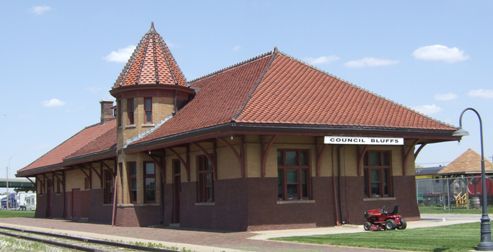 |
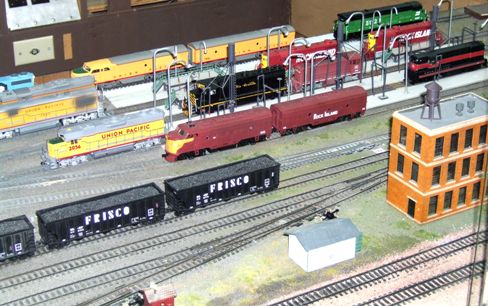 |
It houses quite an extensive HO model railroad which would require several
people to operate. This, being a quiet day, was not an operating day. |
| It is much like any
other model railroad with a variety of engine companies and liveries
present, just as we see on the real thing. Lots of railway and not a lot of
scenery, but then it is a model. | 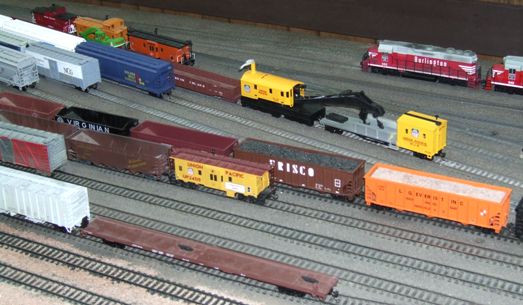 |
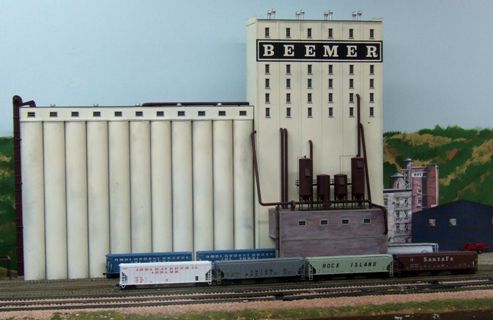 |
It does have a number of set pieces like the grain silos. Rock Island was a
major railroad in Iowa and up through Illinois to Chicago. |
| 915 is an old 4-6-0 loco
from the Chicago, Burlington and Quincy railroad. It dates from 1901. | 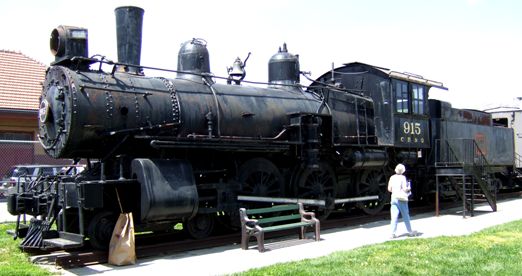 |
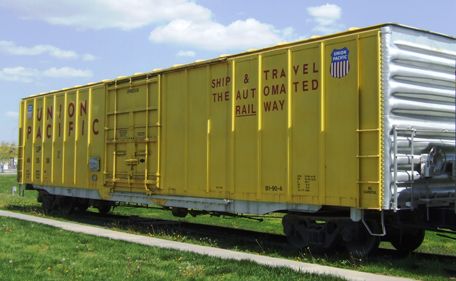 |
There is a small collection of rolling stock on a couple of rails no longer
connected to the real railroad on the other side of the fence. This is
probably the most modern, dating from 1969. |
| There are a couple of
cabooses of different styles, this one has a cupola where the
'brakeman' would have sat and watched over the train looking for hot (axle) boxes and
broken links. The cupola was apparently invented by a brakeman working in
Iowa, and was eventually used extensively on US railroads. Most of the songs
and folklore refer to this type of caboose. | 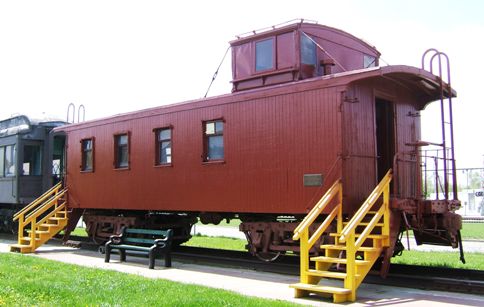 |
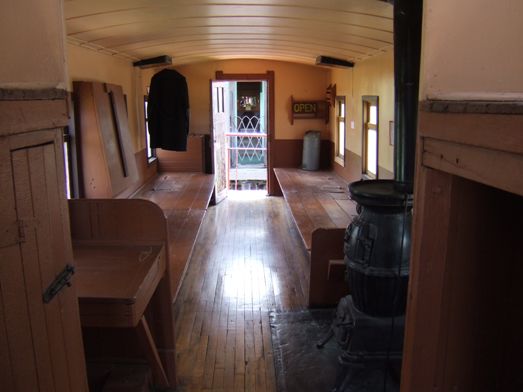 |
Inside was the crew's 'home from home' where they lived, often for days on end. |
| There is one other
locomotive in the collection, a massive 4-8-4 Union Pacific 800 series
freight hauler. It is interesting to see them from the rear quarter so that
you can see just how large is the tender, which carried coal and water for
these huge engines. Some of these were converted in later life to be oil
burners. It is unclear if this was such a conversion. | 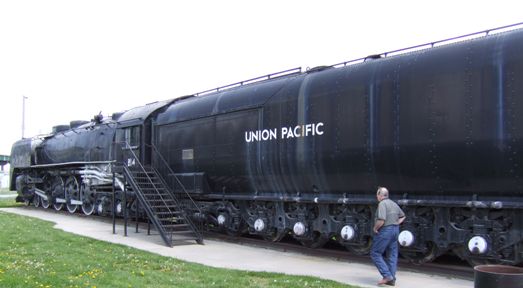 |
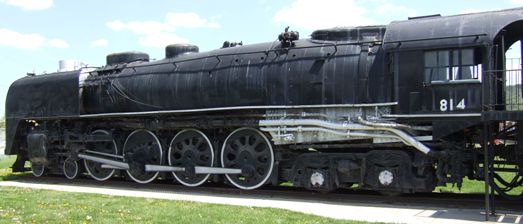 |
One of the reasons I thought it may have become an oil burner is the size of
the firebox (silver) and the absence of a coal screw to feed the coal to the
fire. It would have been impossible for one fireman to have manually stoked a
fire of that size. |
| Engine drivers were
always men, but in this day and age perhaps a woman could drive one..... And
no, they aren't the instructions in her hand! | 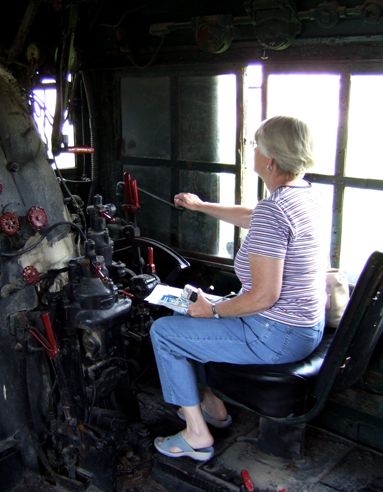 |
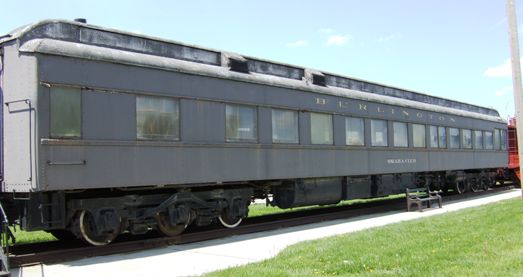 |
This is a very old passenger club car from the turn of the century. It is in
surprisingly good condition. |
| A reminder of real
service, although I was unable to ascertain what style the egg was. | 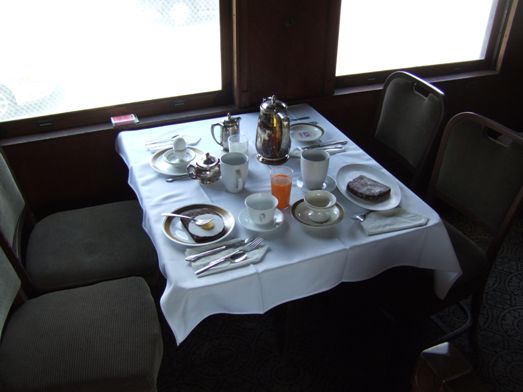 |
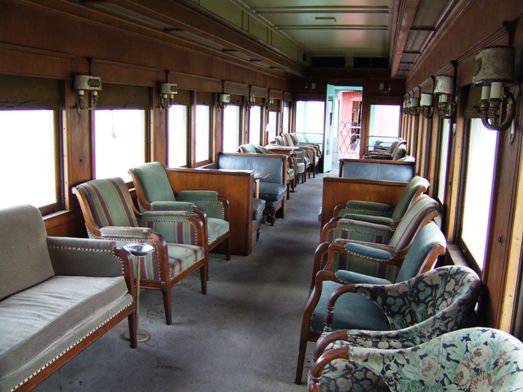 |
Today travel like this would just not be permitted. The seats would have to
be bolted to the floor, face fore & aft, and before long may have to have
seat belts! |
| Amazingly, these are the
original lamps and lampshades. One or two are damaged but most are still
complete. | 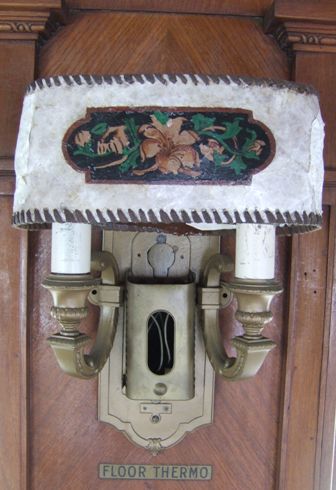 |
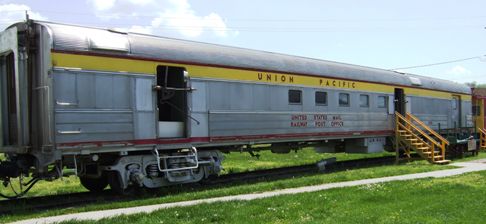 |
The travelling post office was widely used in the US where times to sort the
mail whilst travelling were much greater than in the UK. Many of these
vehicles remain intact at museums like this. |
| And the insides continue
to fascinate young and old alike in these days of electronic mail and
automation. | 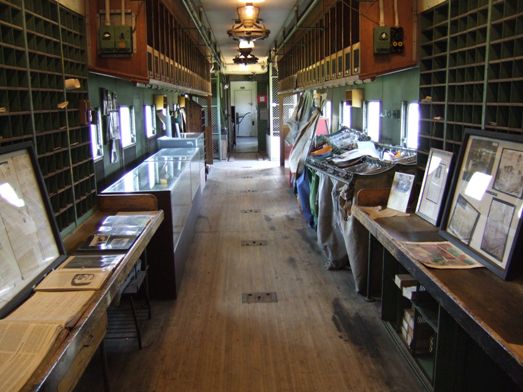 |
 |
Outside is a shunting spur from the (active) yard just down the road. This Iowa
Interstate locomotive pottered up and down all the time we were there. Of
note is the slave unit behind it which has no engine but has got axles,
powered by the main engine's alternator, and extra weights. It is designed to increase
the low speed traction whilst shunting in a yard. Another train came in,
while we were there, with six engines on the front. |
|